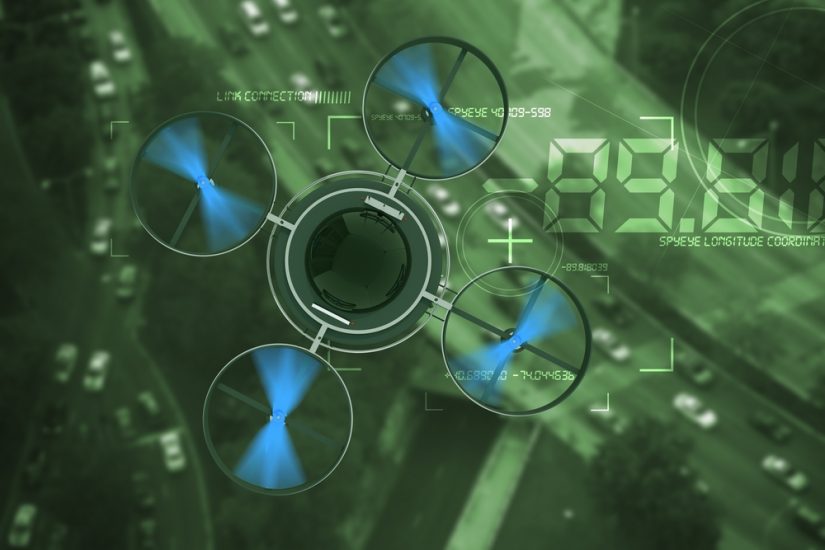By Philip Butterworth-Hayes
DroneUp’s takeover of AirMap (https://www.unmannedairspace.info/commentary/does-the-droneup-airmap-tie-up-mean-the-end-of-the-independent-utm-service-supplier-market/) will have major consequences for the global UAS traffic management (UTM) industry. The company’s business model – offering to provide countries, municipalities, US states and other drone eco-system developers with an airspace monitoring tool which will also allow them to connect to drone operators, at no charge to either system operator or airspace user – looks compelling.
It also, at first sight, seems to make no business sense.
But in the context of the company’s tie-up with Walmart to develop drone hubs (https://www.urbanairmobilitynews.com/logistics/watch-video-droneup-walmart-launch-multi-site-drone-delivery-operations/) the economics of the strategy look more reasonable. To operate a large number OR hundreds of drone flights per day from a single hub, the company needs to ensure that other airspace users in the vicinity can operate safely in the same airspace.
“We are going to invite non-DroneUp operators flying in the area to come into the platform and reserve volumetric airspace for commercial operations,” said the company’s CEO Tom Walker. “We will recognise that and adjust our flights around those reserved operations. Our intention is to never charge operators for access to airspace. It is cost prohibitive for small operators and we want to democratise the airspace so everyone has equal access.”
“It’s something of a defensive move, too,” said Tom Walker. “A lot of states are planning drone delivery corridors which we don’t think is a good idea, especially if you are trying to optimise last mile deliveries. If we have to divert to use air corridor routes it diminishes the effectiveness and scalability of what we can do.”

Tom Walker: DroneUp CEO
It is, however, somewhat of a leap from developing a business model to secure commercial airspace around a Walmart hub to becoming a major global disruptor of the UTM sector.
DroneUp is offering drone eco-system developers such as cities and ports an airspace monitoring tool and a communications system to talk directly to operators at no charge. “The FAA can’t fund this, even in a public-private partnership, and all providers are struggling for a monetisation strategy. We don’t think ethically we should charge operators,” said Tom Walker. “We believe that will push adoption and we’ve spoken with the FAA about our plan.”
DroneUp is not the only delivery company to develop a UTM system which is offered free of charge to other stakeholders, to ensure the safety of proprietary commercial delivery operations. In 2019 Wing was awarded an FAA certificate to allow multiple pilots to oversee multiple UAS deliveries in Christiansburg, Virginia. Earlier this year, Wing’s Open Skies flight authorisation tool became freely available to US drone operators (https://www.unmannedairspace.info/latest-news-and-information/wing-releases-latest-update-of-opensky-platform-to-support-fast-airspace-access-for-drone-operators/).
But with AirMap’s global footprint of UTM agreements with States such as the Czech Republic and Switzerland to build on, Drone-Up is now in the strategic, global UTM development business, where the regulatory, economic and scalability issues are considerably more complex. Yet the company says the business model remains the same – but it will rely on States wanting more than just an airspace monitoring and communications tool.
“The goal is to give our customers an infrastructure so they register flights and see all the flights are operating safely – for that, there is no charge,” said John Vernon, DroneUp’s CTO. “But if they want to get to a stage of actually managing airspace then that’s different – there are recording and integration functionalities which will be needed and we have monetisation methods to cover that.”

John Vernon, DroneUp CTO
“If they want to go to higher levels and introduce classified operations or certain data metrics for customised reporting for regulators, for example, those operations may be revenue generators in the future,” said Tom Walker. “We believe there is a lot of data that can be connected which has value and some specific use case scenarios in which customers will be willing to pay for the service. If you need high levels of customer support, there are service level agreements which will cover our manpower requirements and that’s where our real costs are.”
So DroneUp has developed a business model which can flexibly adapt to whether the customer wants the framework technology or the entire UTM service supplier (USS) function.
“When developing different UTM service offerings to different States there will have to be a degree of customisation,” said John Vernon. “This involves many changes to the front end, but from what we are seeing, not that many changes to the back end. There are different business rules but we can scale those.”
There will be hurdles to overcome. One of the most challenging will be gaining agreement from regulators on whether DroneUp’s no-fee offering – airspace monitoring and communications – constitutes a UTM service which can provide a basic level of operational safety, will be a critical element in developing the product worldwide, especially in the requirement for maintenance, development and support of the tool. The role of the FAA in certifying the system in the USA will be critical in this regard.
There will also be push-back from USSs and air navigation service providers outside the USA who will be concerned at the level of market share which US USSs will likely gain if and when consolidation of the USS sector (which seems inevitable) starts to reduce competition. Because it is rapidly becoming clear that if USSs are to deliver the kind of services and business models envisaged by the FAA and European Union Aviation Safety Agency (EASA) – including no fees to drone operators – they will need deep pockets.
But whatever else, DroneUp appears to be one of the very few UTM service suppliers whose business model makes business sense.
(Image: Shutterstock/Virrage Images )




